The Boeing 314 Flying Boats
by Paul Sheehan
The Boeing 314 was a long range flying boat produced by the Boeing Company at Seattle, Washington, U.S.A. between 1938 - 1941. In 1936 Pan American Airways System requested a flying boat with ultra long range, that could supplement or replace the airline’s Trans-Pacific Martin M-130 flying boats. Boeing made a successful bid for the order, and on July 21, 1936, Pan American signed a contract for 6 aircraft. Boeings engineers had adapted the cancelled XB-15’s 145 foot wing, and replaced the 850 horsepower Pratt and Whitney Twin Wasp radial engines with 1,600 horsepower Wright Twin Cyclones. As a result Pan American ordered 6 more aircraft with the increased engine power and capacity for 77 daytime passengers as the Boeing 314A. The huge flying boats were built at Boeing’s Plant 1 on the Duwamish River, Seattle, and towed to Elliot Bay for taxi and flight tests. The first flight was made on June 7, 1938 under the command of Captain Edmund T. ‘Eddie’ Allen. At first the aircraft was fitted with a single vertical tail, and Captain Allen found he had inadequate directional control. The aircraft was returned to Plant 1, and was fitted with endplates on the ends of the horizontal tail, in place of the single vertical fin. This too was unsuccessful, and finally the centerline vertical fin was restored, after which the aircraft had no significant issues. The 314 used a series of heavy ribs and spars to create a strong fuselage and cantilevered wing, without the need for external drag-inducing struts to brace the wings. Boeing also introduced Dornier-style sponsons into the hull structure which served several purposes:
To fly the long trips required for the Trans Pacific service, the 314 carried 4,246 U.S. gallons (16,070 liters) of fuel. The later 314A model carried a further 1,200 U.S. gallons (4,500 litres). Pan American’s Boeing 314s were built with luxury in mind, and provided a ‘one class deluxe’ experience for their passengers. The seats could be converted into 36 bunks at night-time, as some flights exceeded 12 hours duration. The aircraft were also fitted with a lounge and dining area, with the galleys operated by chefs from four-star hotels. Ladies and gentlemen were provided with separate dressing rooms, and white-jacketed stewards served five and six-course meals with gleaming silver service. With the start of hostilities in Europe in 1939, the 314s continued flying to neutral Lisbon, Portugal and to Ireland, and remained on these routes until 1945. However, military passengers and cargo got priority and the war-time service became a little ‘less luxurious’. Only Pan American’s best and most experienced pilots who had very high hours on other flying boat types, were assigned to the Boeing 314 services. Rigorous training in dead reckoning, timed turns, judging drift from sea current, astral navigation, and radio navigation was conducted. In conditions of poor or no visibility, pilots sometimes made successful landings at fogged-in harbors, by landing out to sea, then taxiing the Clipper into port. The first 314 Honolulu Clipper, entered regular service on the San Francisco - Hong Kong route in January 1939. The one way trip on this route took six days to complete. Commercial passenger service lasted less than 3 years, ending when the United States entered World War II in Dec 1941. At the outbreak of war in the Pacific, the California Clipper NC18602 was en route to New Zealand on a regular service. Rather than risk flying back to Honolulu and being attacked by Japanese fighters, it was decided to fly west from Auckland, back to New York. The long flight that followed, completed Pan American’s first ever Round World flight. The aircraft had started at the Pan American, Treasure Island Base at San Francisco, California on December 2, 1941 and had flown via San Pedro, California, Honolulu, Suva, Fiji, and Noumea, New Caledonia, to Auckland arriving on December 7, 1941, the day Honolulu was attacked by the Japanese. Cut off from the United States by the bombing of Pearl Harbour, Captain Robert Ford was directed by his company to strip the aircraft of all company markings, registration and insignia and proceed in secret to the Marine Terminal, La Guardia Field, New York! Departing Auckland on December 8, 1941, Ford and his crew successfully flew over 31,500 miles (50,694 km) to home via
At Surubaya, Captain Ford could only obtain automobile grade fuel for the next long leg to Ceylon. He figured it was a better option than abandoning his aircraft to the Japanese. On the way from Surabaya to Trincomalee they were confronted by a Japanese submarine and Captain Ford had to quickly climb away to get out of range of the submarine’s guns. After leaving Ceylon on December 24, 1941, black oil suddenly began gushing out of the number 3 engine and poured back over the wing. Captain Ford shut down the engine and returned to Trincomalee, were he discovered one of the engine’s cylinders had failed. Repairs had to be made before he could continue his epic journey. A Pan American airport manager and a radio officer had been dispatched to Leopoldville to meet the Clipper on arrival. When Captain Ford landed, they handed him an ice cold beer and he later said it was one of the high points of the whole trip! On arrival at New York on January 6, 1942, the Clipper was renamed ‘Pacific Clipper’ and retained this name for the remainder of it’s service with Pan American. To view You Tube clip on this event click 'HERE' Details of the 12 Boeing 314s built, are as follows:
The last Pan American 314 to be retired in 1946 was NC18602 'California Clipper'. It had accumulated more than a million flight miles. Of the 12 Boeing 314 Clippers built three were lost to accidents, although only one of those resulted in fatalities: 24 passengers and crew aboard the 'Yankee Clipper' NC18603 who lost their lives in a landing accident at Lisbon, Portugal on February 22, 1943. Among that flight's passengers were prominent American author and war correspondent Benjamin Robertson who was killed and the American singer and film / TV actress Jane Fromanwho was seriously injured. Pan American’s 314s were removed from scheduled service in 1946 and the seven serviceable B-314s were purchased by the start-up airline New World Airways. These sat at San Diego's Lindbergh Field for a long time before all were eventually sold for scrap in 1950. The last of the fleet, the Anzac Clipper NC18611(A), was resold and scrapped at Baltimore, Maryland in late 1951. BOAC's 314As were withdrawn from the Baltimore - Bermuda route in January 1948 and replaced by Lockheed 749 Constellations flying from New York and Baltimore to Bermuda. None of the dozen 314s built between 1939 and 1941 survived beyond 1951 with all 12 having been scrapped, scuttled, cannibalized for parts or otherwise written off. Underwater Admiralty Sciences, a non-profit oceanographic exploration and science research organization based in Kirkland, Washington, announced in 2005 at the 70th Anniversary of the first China Clipper flight in San Francisco, its plans to survey, photograph and possibly recover the remains of the hulls of two sunken 314s, namely NC18601 (Honolulu Clipper) that had been scuttled in the Pacific Ocean in 1945 and NC18612 (Bermuda Sky Queen, formerly Cape Town Clipper) that had been sunk in the Atlantic Ocean by the Coast Guard in 1947. UAS has also spent significant time at Pan Am reunions and with individual crewmembers and employees of Pan Am conducting videotaped interviews for the mission's companion documentary. There are unconfirmed reports that a private team of French businessmen FRT initiated an expedition to find the Honolulu Clipper on February 15, 2011 using Russian equipment. It was further reported that the aircraft will be kept in a private collection and not open to the public. On June 14, 2012 the 'Honolulu Clipper' was spotted by the French Recovery Team FRT, with very little damage. Studies for recovery of the aircraft continue. There is a life-size 314 mock-up at the Foynes Flying Boat Museum, Foynes, County Limerick, Ireland. The museum is at the site of the original transatlantic flying-boat terminus. |
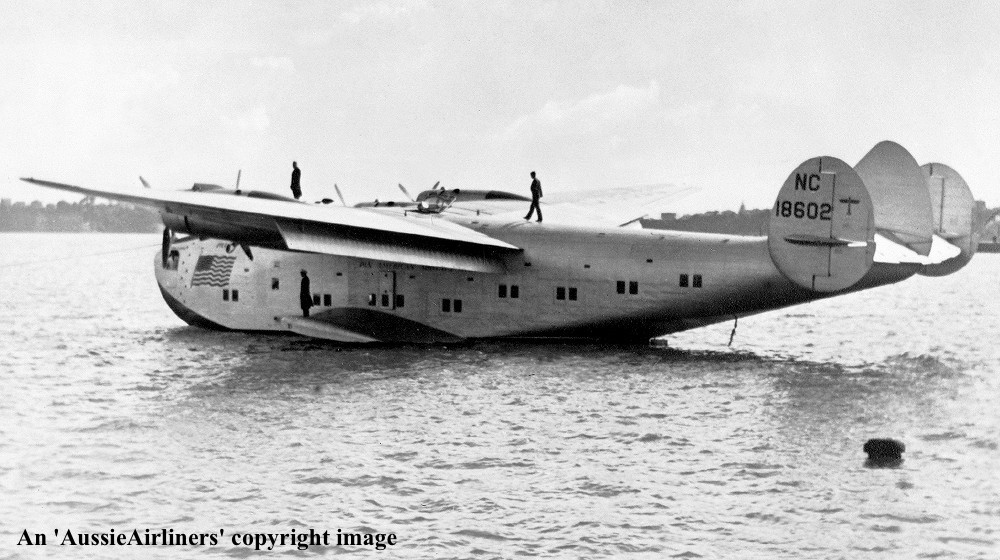 |
NC18602. Pan American Airways System - in the standard livery at Waitemata Harbour, Auckland, circa 1939. © W. Williams / Alexander Turnbull Library PAColl Image 0434-01 via P. Sheehan Collection - 1950-096. |
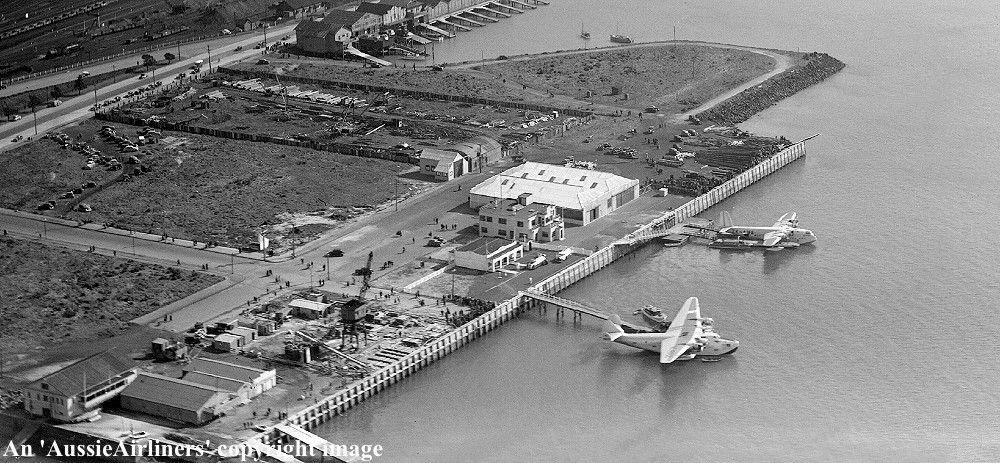 |
NC18606. Pan American Airways System - in the standard livery at Mechanics Bay, Waitemata Harbour, Auckland, circa 1939. © Whites Aviation / Alexander Turnbull Library Image WA-11686-G via P. Sheehan Collection - 1950-100. |
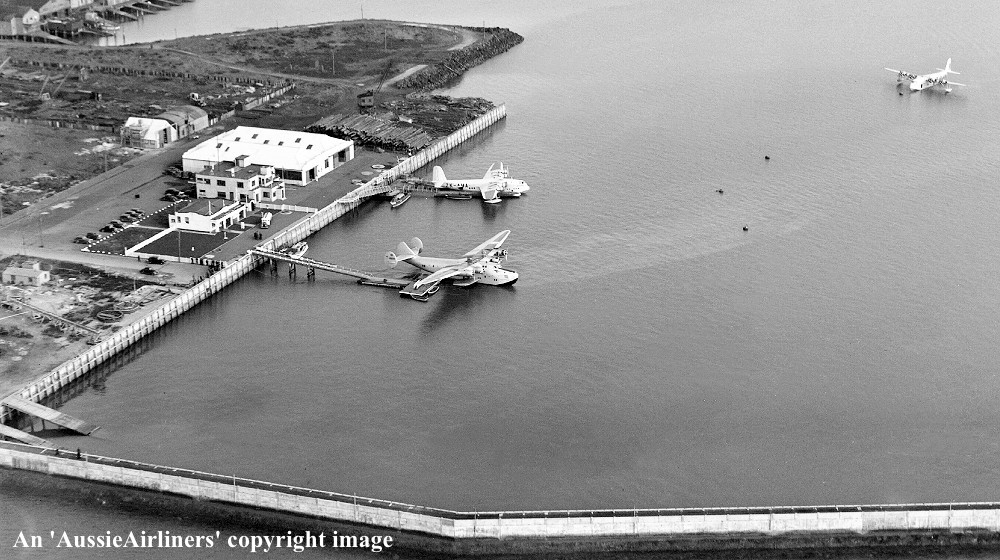 |
NC18606. Pan American Airways System - in the standard livery at Mechanics Bay, Waitemata Harbour, Auckland, circa 1940. © Whites Aviation / Alexander Turnbull Library Image WA-11687-G via P. Sheehan Collection - 1950-101. |
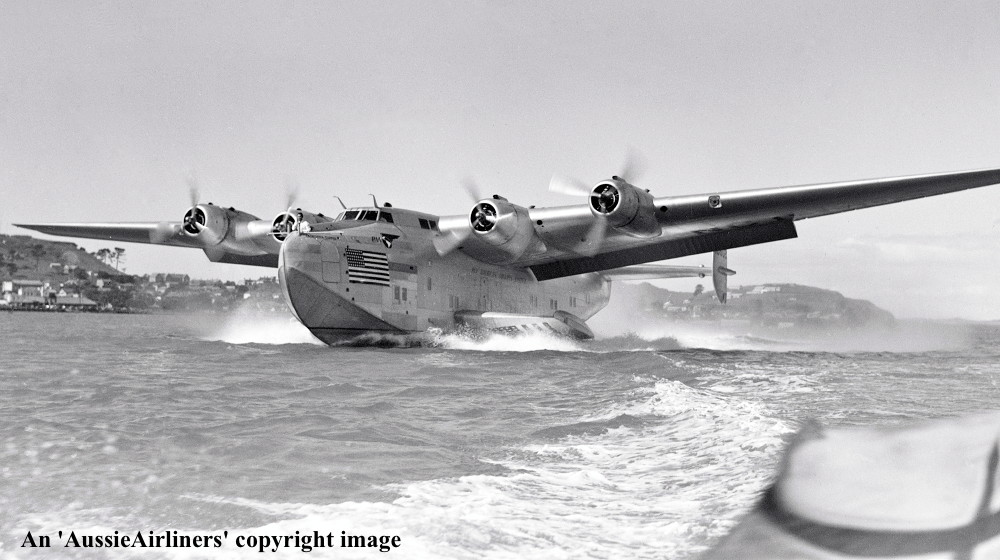 |
NC18606. Pan American Airways System - in the standard livery at Waitemata Harbour, Auckland, December 7, 1940. © Whites Aviation / Alexander Turnbull Library Image WA-00323-G via P. Sheehan Collection - 1950-093. |
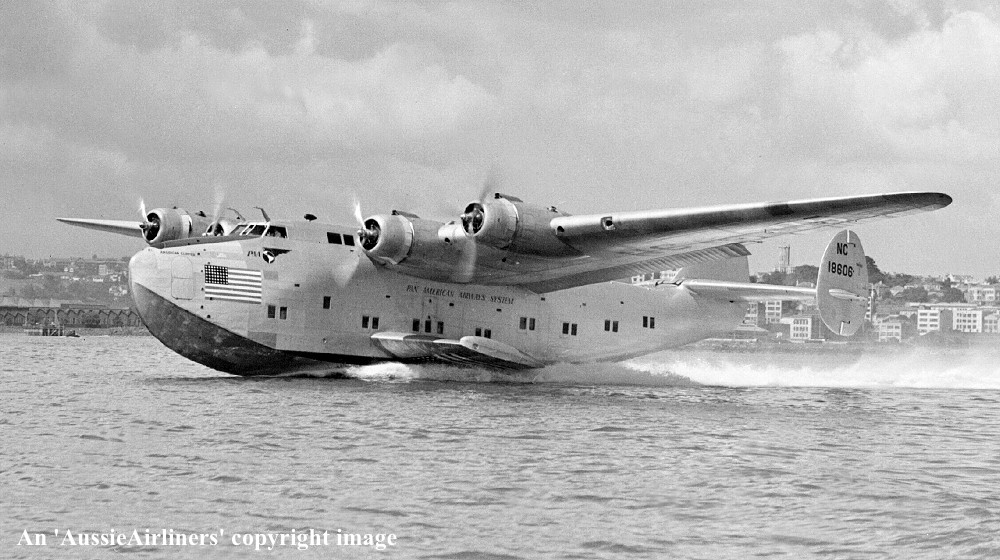 |
NC18606. Pan American Airways System - in the standard livery at Waitemata Harbour, Auckland, December 7, 1940. © Whites Aviation / Alexander Turnbull Library Image WA-00322-G via P. Sheehan Collection - 1950-094. |
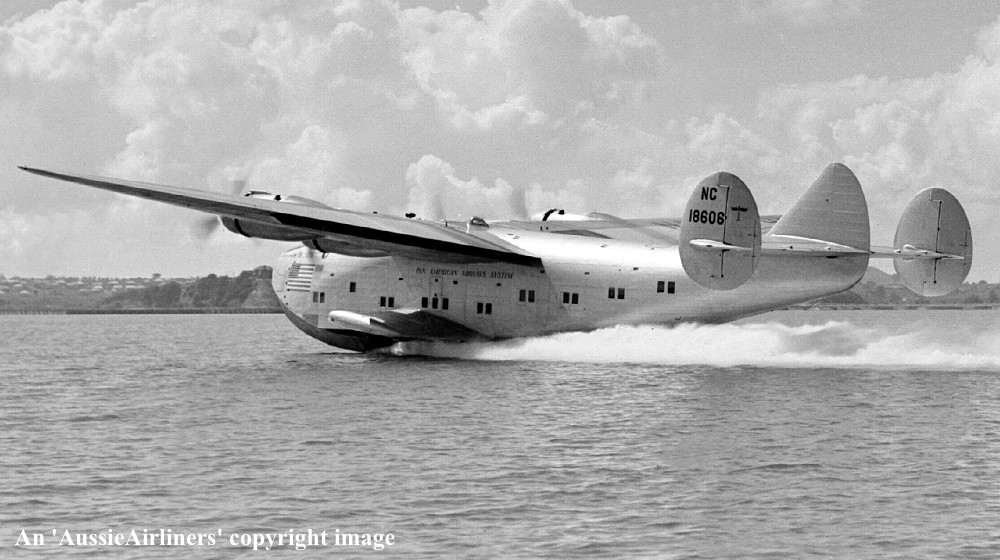 |
NC18606. Pan American Airways System - in the standard livery at Waitemata Harbour, Auckland, December 7, 1940. © Whites Aviation / Alexander Turnbull Library Image WA-00412-G via P. Sheehan Collection - 1950-095. |
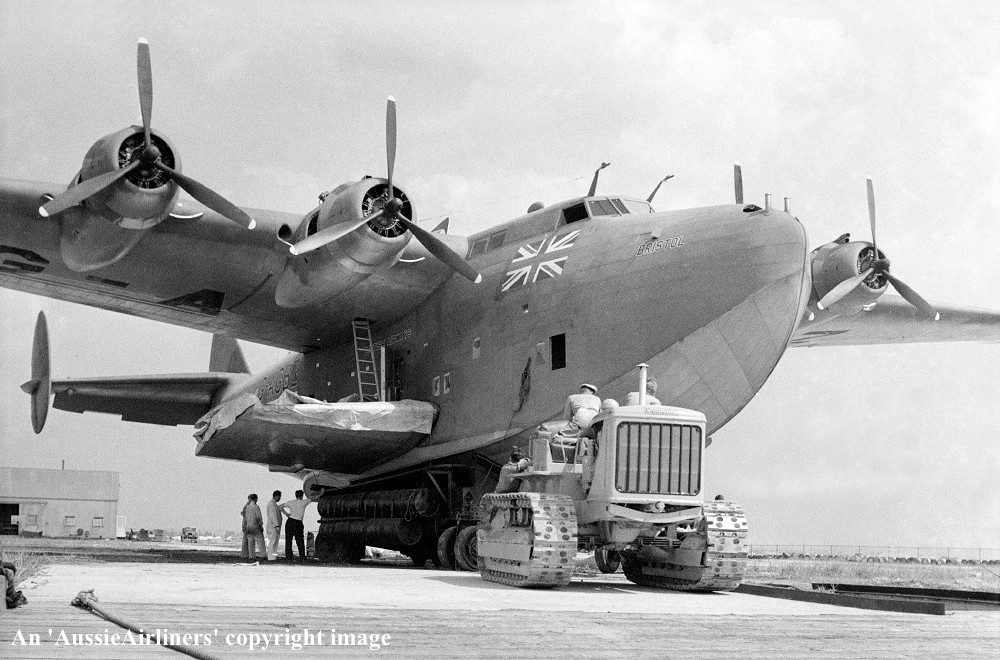 |
G-AGBZ. British Airways - in the wartime livery at Port Washington Marine Terminal, La Guardia, August 1945. © Whites Aviation / Alexander Turnbull Library Image WA-00471-F via P. Sheehan Collection - 1950-097. |
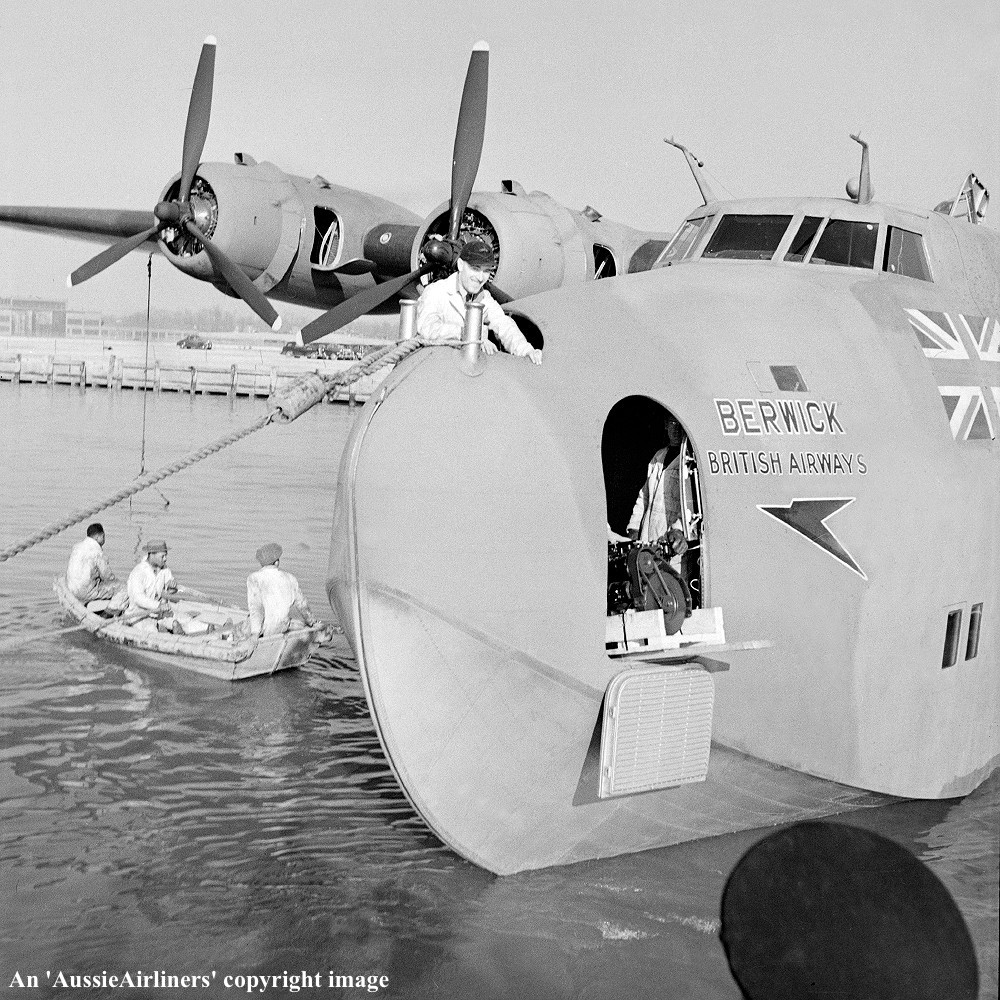 |
G-AGCA. British Airways - in the wartime livery at Port Washington Marine Terminal, La Guardia, August 1945. © Whites Aviation / Alexander Turnbull Library Image WA-00472-F via P. Sheehan Collection - 1950-097. |
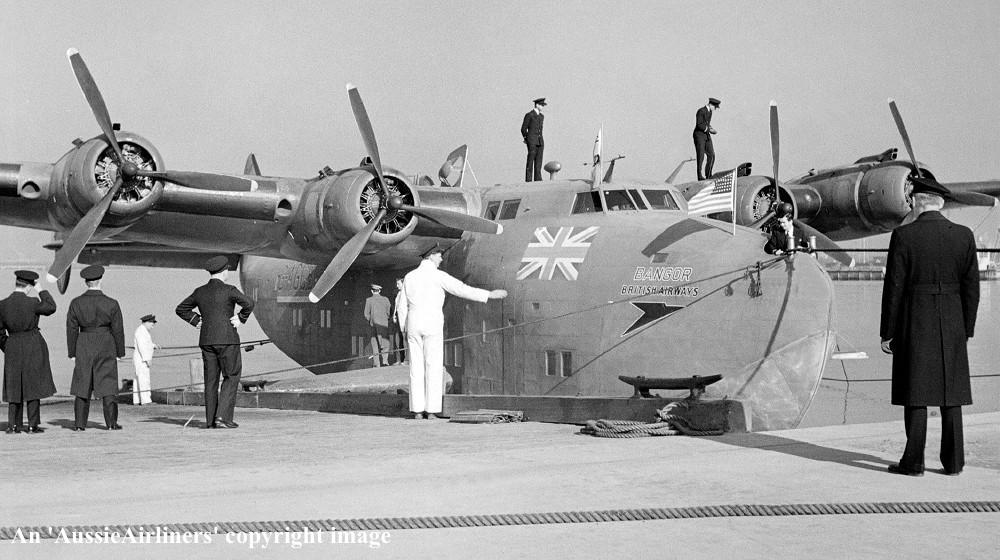 |
G-AGCB. British Airways - in the wartime livery at Port Washington Marine Terminal, La Guardia, August 1945. © Whites Aviation / Alexander Turnbull Library Image WA-00473-F via P. Sheehan Collection - 1950-097. |